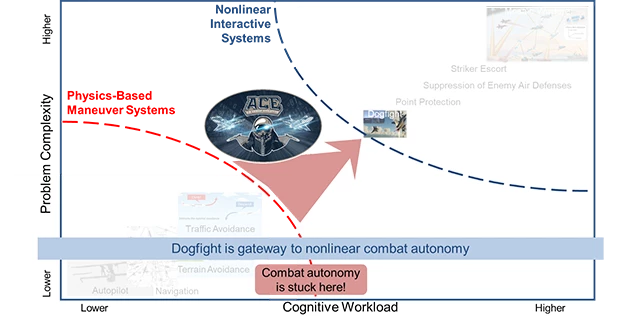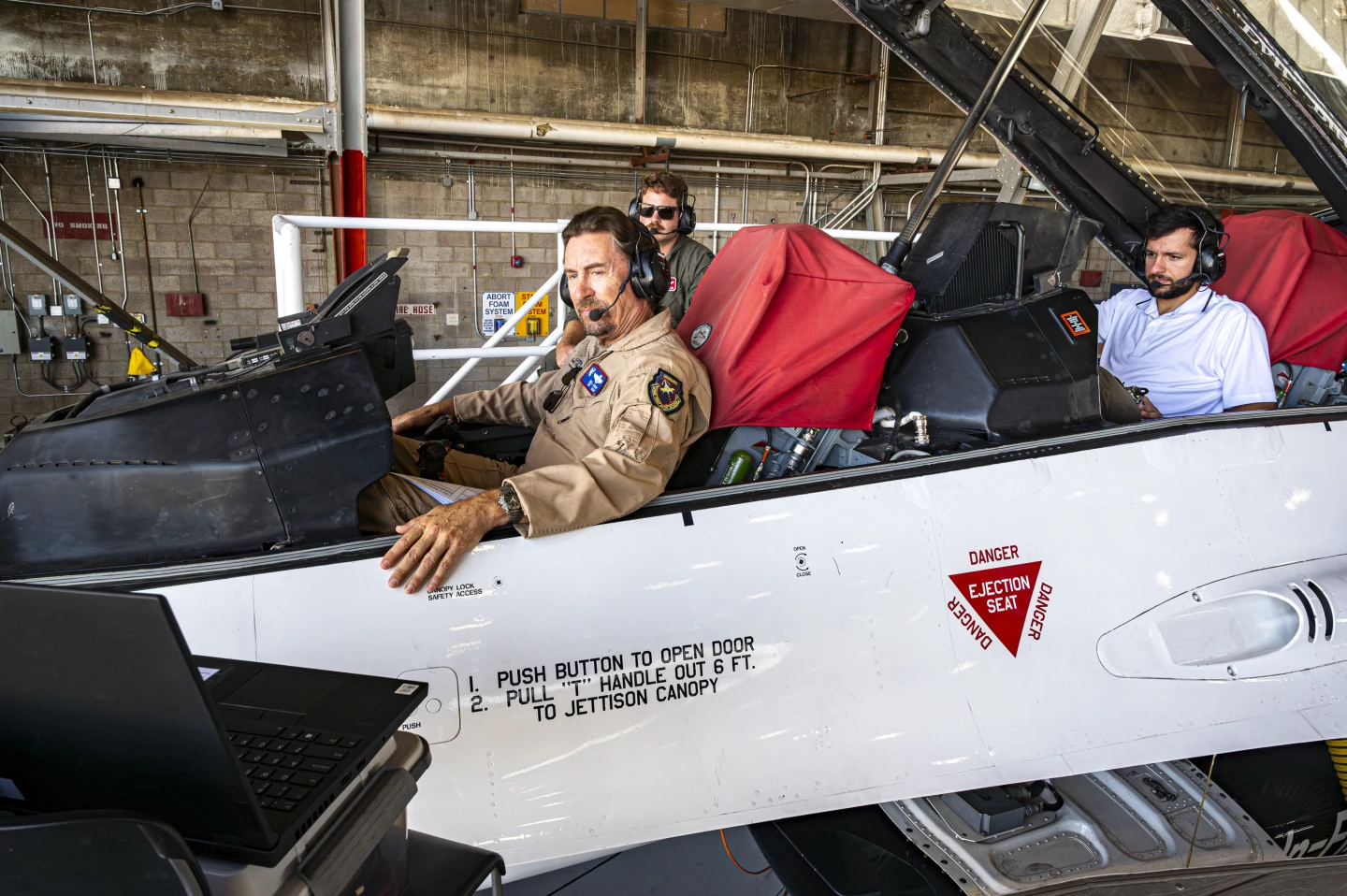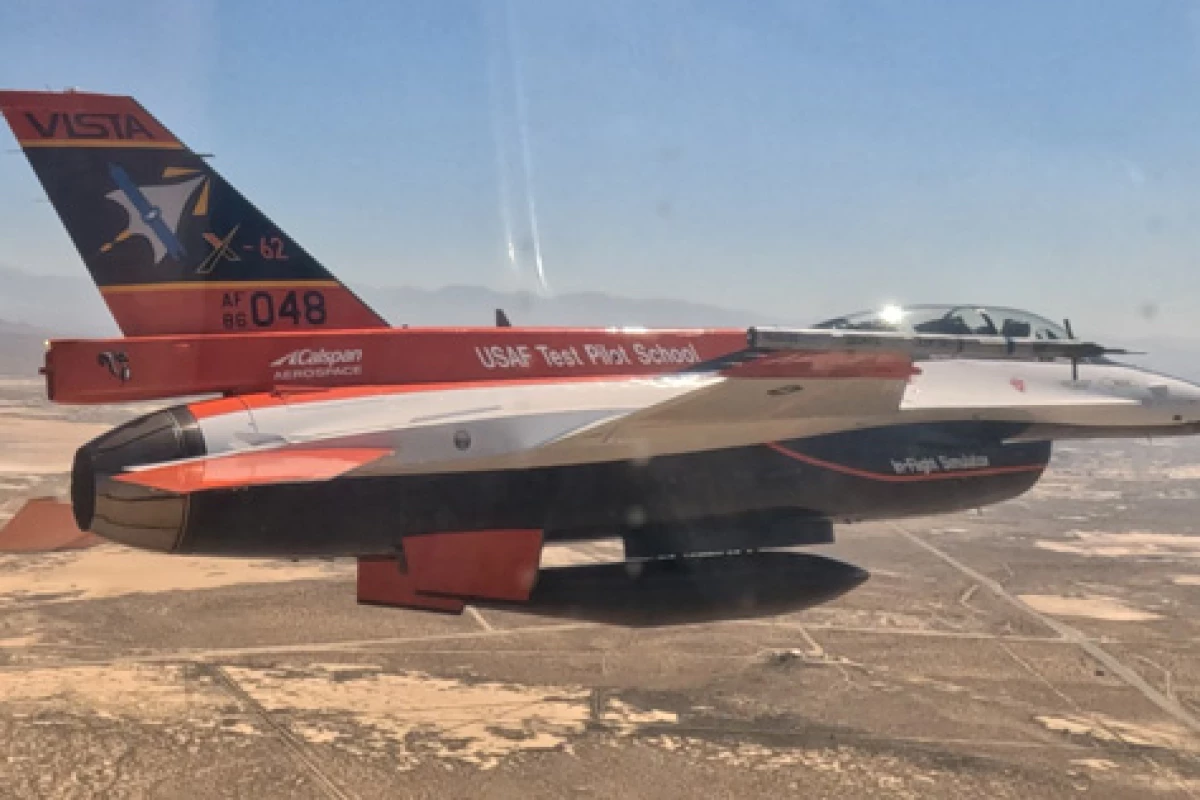An F-16 fighter plane running on artificial intelligence has engaged in the first-ever aerial dogfight exercise with a human-piloted counterpart. This is the first footage of the September mock fight, conducted as part of DARPA's Air Combat Evolution (ACE) program.
AI on aircraft is far from new, even on warplanes. In fact, the military applications of AI are a major part of technological initiatives aimed at improving conventional forces by giving them robotic reinforcements. In the case of the US and other air forces, this includes creating unpiloted Loyal Wingmen with the same performance capabilities as their piloted counterparts.
To achieve this, DARPA started its ACE program featuring the X-62A, also known as the Variable In-flight Simulator Test Aircraft (VISTA). This is a Lockheed Martin F-16D Block 30 Peace Marble II aircraft that has been fitted with Block 40 avionics and other modifications that allow it to incorporate AI. It's already shown the ability to log a number of flight hours without human control, but that's still a long way from what the US Air Force wants.
This is where dogfighting comes in.
At first glance, it looks as if DARPA is working on an autonomous fighter jet that can engage in dramatic Top Gun-type engagements. However, dogfighting is a bit outdated in the 21st century, where 5th-Generation fighters are designed to be part of a global network of sensors, weapons, command and control systems that allow an F-35 Lightning II and similar aircraft to detect and destroy hostiles without even seeing them above the horizon.
What's at stake is how to make the AI more effective.

Until recently, the main way of producing AI for aerospace was to take the expert approach, where the programmers relied on predefined rules as written by experts for specific conditions. Simulations and flight tests were designed to confirm or amend these rules with the main approach being based on the laws of physics.
The ACE program is aiming at using machine learning as an alternative. In this, the AI is capable of adjusting its behavior based on historical data and experience in a non-linear interactive system. This can produce new insights and is especially useful in dynamic situations where the rules are unclear and outcomes are unpredictable.
It's a fertile approach, but it has its problems. It requires a lot bigger data workload and much more complexity when it comes to problem-solving. This puts a lot more load on the computers. In addition, there are problems with understanding and verifying what the AI is doing and why. As far as the pilots working with the AI are concerned, this translates into one word: Trust. If that isn't there, the pilots won't have anything to do with machine learning AI.

This is why dogfighting was so important in the recent tests that took place at the Air Force Test Pilot School at Edwards Air Force Base, California. Though dogfights might not be very relevant to modern combat, they are very good for testing AI because such fights are complex and unpredictable.
They also require the AI to follow the rules set down for pilot training. Dogfighting exercises at altitudes as low as 2,000 ft (600 m) at 1,200 mph (1,900 km/h) require strict safety rules because it tends to be expensive and upsetting when fighter jets slam into one another or crash into bridges or buildings.
The tests, which are continuing through this year, are intended to tweak the AI, establish an ethical foundation for using such systems, and study how to measure and predict human trust in AI. Though the AI was in charge of the X-62A, there was a safety pilot in the cockpit at all times.
So far the program has made over 100,000 lines of flight-critical software changes across 21 test flights.

If successful, ACE could lead to practical AI systems that would elevate fighter pilots to the role of mission commanders who oversee the more important aspects of the job while the AI takes over flying and actual combat engagement. In addition, AI combat capabilities will advance to over the horizon operations. That will not only require scaling up the technology, but building an infrastructure to support it.
"The potential for autonomous air-to-air combat has been imaginable for decades, but the reality has remained a distant dream up until now. In 2023, the X-62A broke one of the most significant barriers in combat aviation," said Secretary of the Air Force Frank Kendall, who has said that he will personally ride along in the X-62A. "This is a transformational moment, all made possible by breakthrough accomplishments of the X-62A ACE team."
Source: DARPA








